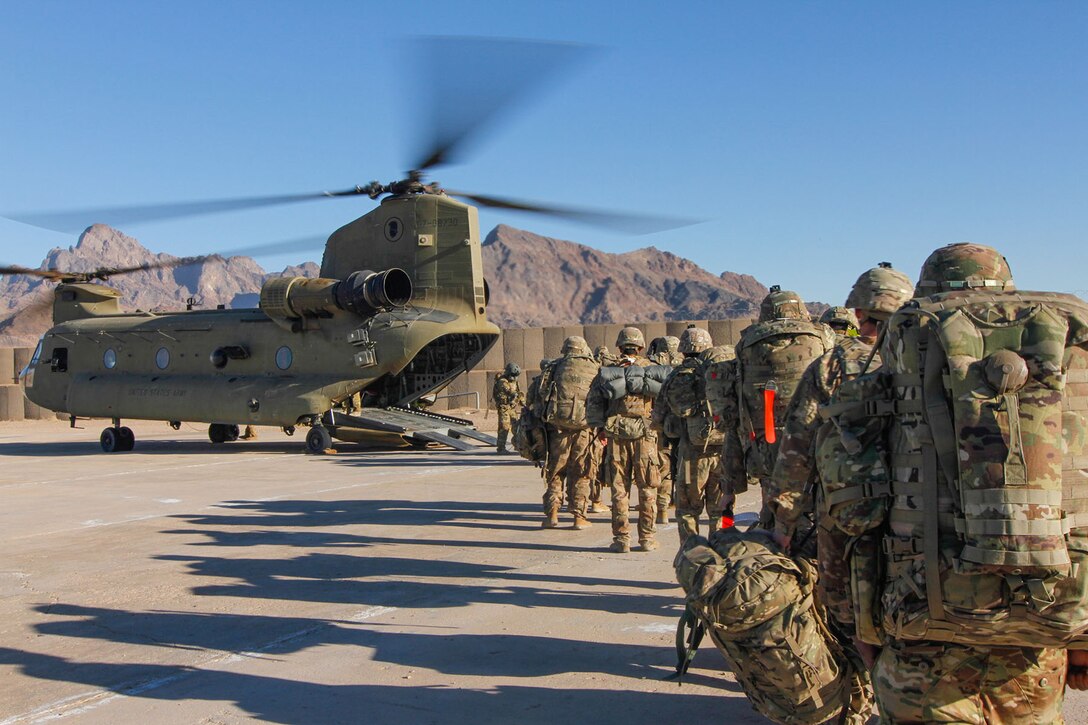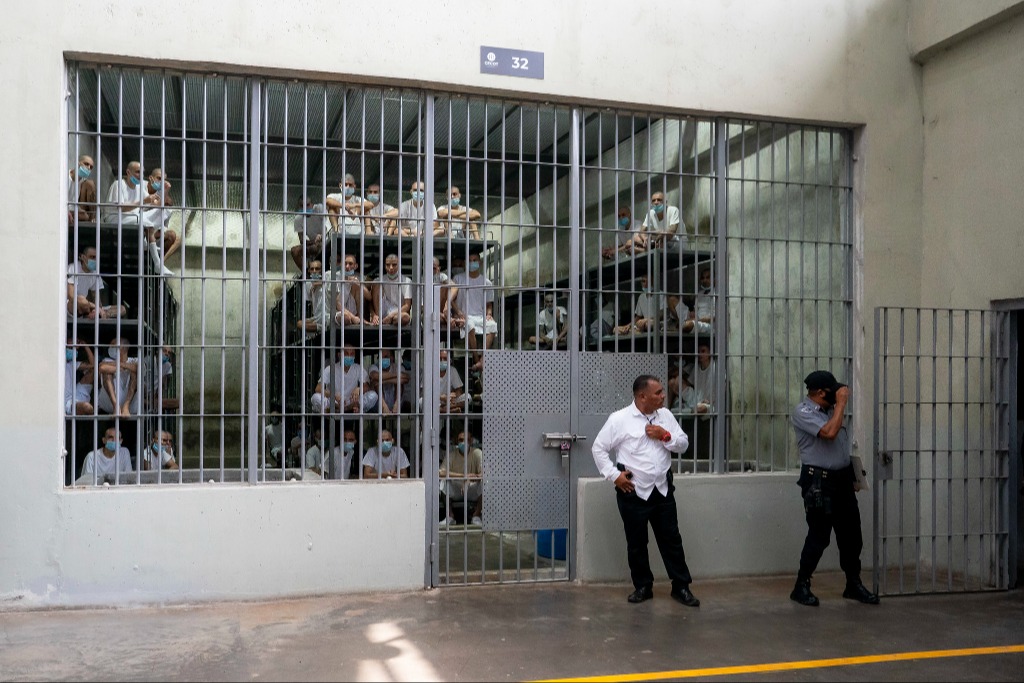What’s in the Lead Inspector General’s Quarterly Report on Afghanistan?
The inspector general’s quarterly report provides an interesting status update on the conflict in Afghanistan in light of the Trump administration’s expedited drawdown.

Published by The Lawfare Institute
in Cooperation With

On Nov. 17, Acting Secretary of Defense Christopher Miller announced a drawdown of U.S. troops in Afghanistan and Iraq. Under the new change, the 5,000 troops previously scheduled to stay until the end of November will be halved and 2,500 will remain in Afghanistan by Jan. 15, 2021. In his announcement, Miller said, “This is consistent with our established plans and strategic objectives, supported by the American people, and does not equate to a change in policy or objectives.”
The same day, the Pentagon’s Office of the Inspector General publicly released its statutorily mandated quarterly report on U.S. involvement in Afghanistan, painting a grim picture of the state of play in the country. The report, titled “Operation Freedom’s Sentinel (OFS) Lead Inspector General Report to the United States Congress,” covers developments in Afghanistan from July 1 to Sept. 30 of this year. It draws a stark contrast to the acting secretary’s announcement—the Taliban continue to attack the most important U.S. ally in the region, the Afghan government.
The inspector general provides an interesting status update on the conflict in light of Miller’s comments that the accelerated drawdown is “consistent with our established plans and strategic objectives.” For instance, Lead Inspector General Sean O’Donnell’s opening message notes that while the Taliban is not attacking “U.S. forces and interests in Afghanistan, it is difficult to discern the extent to which [the Taliban] is meeting the requirement that Afghanistan not serve as a haven for terrorists who threaten the United States.” The report also quotes U.S. Special Representative for Afghan Reconciliation Zalmay Khalilzad, who warned that there are “‘distressingly high levels of violence’ that could threaten the peace agreement.”
The report’s main section, titled “The Quarter in Review,” highlights security, diplomatic, political and humanitarian actions this past quarter. Its second section details the lead inspector general and partner agencies’ oversight activities, including “audits, inspections, and evaluations.” These oversight actions include one audit that found “military services did not safeguard pharmaceuticals at facilities supporting OFS” and another that found the State Department “spent $8.4 million for meals neither needed nor provided at U.S. Government dining facilities in Kabul.” The oversight actions are important, but the biggest takeaway in the report comes from “The Quarter in Review”: The conflict in Afghanistan is alive regardless of the U.S. drawdown.
So what’s actually in the report? This post, broken into four sections, summarizes the report’s critical updates on the ongoing peace talks with the Taliban, increased Taliban attacks against the Afghan National Defense and Security Forces (ANDSF) and the coronavirus pandemic’s effect on Afghanistan. The last section details reporting on the most recent month of the conflict that didn’t make it into the report because it fell outside the time frame covered by this edition of the inspector general’s report.
The Afghan Peace Negotiations
The peace negotiations between representatives of the Afghan and U.S. governments and the Taliban are ongoing. The talks were scheduled to begin on March 10 but were delayed because of a dispute over “when and how both sides should release prisoners.” Over the summer and early fall, the Afghan government released 5,000 prisoners with ties to the Taliban and the Taliban released 1,000 prisoners with links to the Afghan government.
The negotiations began on Sept. 12 in Doha, Qatar, and initially concerned procedural rules but were hampered over a disagreement concerning which previous bilateral negotiations would serve as the basis for the talks.
What were the two sides choosing between for their negotiating baseline? The report notes that the negotiators struggled to pick between “two separate two-party agreements announced in February, one between the United States and the Taliban, and the other between the United States and the Afghan government.” One consistent issue was the Taliban’s “assertion that its agreement with the United States did not mean it was required to end hostilities with the Afghan government.” In other words, the Taliban “only recognized a ceasefire with the United States,” not the Afghan government. This assertion prevented the Taliban delegation from engaging in discussions about a cease-fire with the Afghan government. The Taliban also made it clear that they would back out of the talks “if Taliban leaders decided the United States was not adhering to the U.S.-Taliban agreement.”
The two sides’ separate agreements with the U.S. also meant that they recognized different end goals for the negotiations. The Afghan government’s team, led by Masoum Stanekzai, reportedly tried to compromise by “jointly referencing” each agreement as a basis for the Afghan peace negotiations. However, one key distinction in the U.S.-Taliban agreement that the inspector general paraphrases is that “a permanent ceasefire will be an item on the agenda” of the negotiations (emphasis added). According to the report, the U.S.-Afghan declaration notes “that a comprehensive and sustainable peace agreement will include a permanent ceasefire and a political settlement” (emphasis added). In other words, the Taliban and Afghan government would not even agree that a successful peace agreement achieved in Doha would include an end to fighting.
The second area of disagreement that the report identifies is “the school of Islamic jurisprudence that would be used to resolve disputes between the two sides.” The Taliban’s negotiating team—led by Abdul Hakim, the chief justice of the Taliban court system—wanted the Sunni Hanafi school to govern the “legal basis for the negotiations.” The inspector general, citing press reports, notes that this is the most widespread Sunni school of jurisprudence and is listed in Afghanistan’s constitution “as the source of law for its courts in cases where neither the Afghanistan constitution nor its laws is sufficient.” But the Afghan government team—which the report identifies as representative of the “Broad Afghan Political Specturum”—was concerned that relying on the Hanafi school could lead to discrimination “against the country’s significant non-Sunni religious minorities.”
The report also explains “significant substantive issues” that remain aside from procedural disputes. Paraphrasing a Defense Intelligence Agency (DIA) report, the inspector general says that “the Afghan government was not prepared to give up its current republic structure to implement the Taliban’s interpretation of Islamic law and government.” According to the report, “the two sides agreed to continue the procedural discussions concurrently with the main negotiations.”
Implications of the U.S. Drawdown and Increased Attacks on Afghan Forces
The previous drawdown schedule, created under then-Secretary of Defense Mark Esper, would have mandated that the U.S. maintain fewer than 5,000 military personnel in Afghanistan by the end of November, with a full military withdrawal by May 21, 2021. This drawdown schedule was part of the United States’s “obligations” in the February agreement with the Taliban.
The report notes that this plan found support among a constituency that the Pentagon is unlikely eager to please: terrorist groups. The groups are reportedly “[s]upportive” of this withdrawal schedule because they “anticipate [a] reduction in counterterrorism pressure.” The inspector general acknowledges that al-Qaeda leaders supported the February agreement, publicly calling it a “historic victory.” A DIA assessment, paraphrased in the report, also notes that “al-Qaeda leaders support the agreement because it does not require the Taliban to publicly renounce al-Qaeda and the deal includes a timeline for the United States and coalition forces to withdraw—accomplishing one of al-Qaeda’s main goals.” The DIA also notes that the local Islamic State affiliate has “bolster[ed] its messaging and recruiting efforts” in light of the U.S.-Taliban agreement.
A subsection of the report titled “Taliban Focuses Violence on Afghan Forces as U.S. Drawdown Continues” lays out the most significant effect of the U.S.-Taliban agreement. The inspector general explains: “Instead of targeting coalition forces, the Taliban increased its attacks on the ANDSF and Afghan government officials.” It was this trend that caused Ambassador Kalilzhad, in the words of the report, “to state that there is no military solution, and warn that ‘distressingly high’ levels of violence could threaten the peace agreement.”
While there were no U.S. combat deaths this past quarter, fighting increased between the Taliban and Afghan government forces. The report also says that, in the previous quarter, U.S. airstrikes decreased by 80 percent “after the February U.S.-Taliban agreement.” However, the U.S. military has “stated that [they] can and will conduct strikes against the Taliban to defend the ANDSF.” The U.S. military has not released “an unclassified estimate of attacks initiated by the Taliban compared to other militant groups.” Although the Pentagon reported a Taliban rocket attack against a coalition base in Helmand, “media reporting indicated that a Taliban faction opposing the U.S.-Taliban agreement may have carried out the attack.”
The inspector general also notes that 228 people were killed in 54 insider attacks against Afghan government forces—incidents in which someone with an allegiance to the Taliban or other terrorist groups wearing a government uniform turns on fellow soldiers or officers—from May 1 to Oct. 31. While the U.S. military reported “no high-profile attacks in Kabul this quarter,” the inspector general notes that the NATO definition for “high-profile attacks” includes only those involving “a car bomb or suicide bomber[,]” which “potentially undercounts attacks.” As an example of a high-profile attack that didn’t fulfill the NATO definition, the report lists an explosion in Kabul that occurred next to the Afghan vice president’s convoy, killing 10 people. Civilian casualties, “caused by any individual or organization,” increased to 2,561 casualties, up from 1,787 casualties in the previous quarter. While there were 36 percent fewer casualties than the same quarter last year, this quarter’s numbers are greater than the same period two years ago.
In addition to monitoring levels of violence, the inspector general also examines NATO’s efforts to “train, advise, and assist” Afghan government forces. This “Capacity Building” section of the report details substantial problems that the coalition faced with Afghan security forces. First, NATO forces had helped the Afghan army develop a “checkpoint reduction and base development plan” that emphasized reducing “the most vulnerable checkpoints, such as those that could not be supported by indirect fires or those that had few personnel assigned.” Approximately 16 percent of Afghan National Army soldiers are assigned to 2,000 checkpoints, and 67 percent of Afghanistan’s police officers monitor more than 5,000 checkpoints. The Afghan government wanted to “eliminate or consolidate” 20 percent of the total Afghan National Police’s checkpoints this year.
The checkpoint reduction efforts were complicated by the fact that the Afghan government forces “did not synchronize its checkpoint reduction plans” between the army and national police. And the report adds that “district and provincial leaders and governors often said that checkpoints are the best measures to protect the population and continued to create local political pressure to retain checkpoints the [Afghan National Army] otherwise would consider unnecessary.” The Afghan army reportedly closed 55 checkpoints and constructed 39 new ones, while the Afghan National Police closed 94 checkpoints.
The second problem facing the Afghan government’s policing strategy came after the government announced its intention to disband the Afghan Local Police (ALP) force in June. The reason for the change is not clear, but it’s possibly due to high rates of desertion and corruption within the ranks of the ALP. Under President Ashraf Ghani’s order, 30,000 local police officers were supposed to be assimilated “into other security institutions.” This order was apparently given as “the Ministry of Defense had no plan to increase the size” of newly established local security forces. According to the inspector general, “[t]he DIA assessed that defections to the Taliban and local powerbrokers may marginally increase” as the local police force dissolves. The Afghan Ministry of Interior Affairs also identified that nearly 7,500 of the ALP officers are ineligible to join other security forces due to “age, drug use, corruption, human rights violations, and criminal records.” Ghani ordered that ineligible officers be directed to other government bureaus such as the Ministry of Agriculture, Irrigation and Livestock. Paraphrasing the coalition’s transition force, the report states that “many ALP members are unwilling to leave their homes or take jobs elsewhere,” despite these plans.
The coronavirus has also complicated NATO’s advising of Afghan forces. The report explains that coalition forces have been advising Afghan soldiers remotely since the beginning of the pandemic. While the ANDSF continues to face increased attacks from the Taliban and other extremist groups, the report, citing the coalition’s transition organization, states that “the lack of face-to-face advising” has “complicated advisors’ efforts to build rapport with new partners and read the atmospherics and nuances associated with interpersonal interactions.” The limited face-to-face interactions also “made it more difficult to assess, monitor, and evaluate the ANDSF” at lower levels. In a subsection titled “Afghan Aviation Training Programs Stall,” the report states that training for aircraft mechanics “was delayed by COVID-19 measures and the gradual U.S. military withdrawal.” The inspector general also says that “[i]t is unclear how pilots will be trained if the United States completes its conditional withdrawal of all non-diplomatic personnel before pilot training concludes.”
The Coronavirus and Afghanistan
The coronavirus has torn through Afghanistan’s population and caused an economic contraction. The inspector general cites an August survey by the Afghan Ministry of Public Health that estimates that one-third of Afghanistan’s population had been infected with the coronavirus. While noting that coronavirus statistics are “likely underreported,” the U.N. Office for the Coordination of Humanitarian Affairs (OCHA) reported that “1,458 people have died, including 76 healthcare workers, from the pandemic.”
One subsection of the report’s “Development and Humanitarian Assistance” section is titled “The Afghan Government Believes Peak of the Pandemic Has Been Reached, Creating Challenges for USAID Interventions.” The report states that, “[d]espite indications that COVID-19 remains a serious public health threat in Afghanistan, testing has declined and public health restrictions have been lifted or ignored.” The inspector general also says that there are “shortfalls in [personal protective equipment], medical supplies, and equipement.” According to the inspector general, the U.S. Agency for International Development (USAID) reports that Afghan “healthcare workers are unwilling to wear protective equipment and the Ministry of Public [H]ealth is no longer enforcing requirements to do so.”
The report explains that U.S. government and international efforts to aid the Afghan government have also been inhibited by the United States’s withdrawal from the World Health Organization (WHO). In a subsection titled “Laboratories and Testing,” the report says that the WHO, with funding from USAID, had planned to increase the number of “testing laboratories in Afghanistan from 1 to 20 by July.” But the inspector general, citing USAID, notes that “the pending U.S. withdrawal from the WHO (scheduled to go into effect in July 2021) slowed down [WHO] activities and associated U.S. funding cuts meant the WHO could only operationalize 11 laboratories.” In total, the OCHA said 13 testing laboratories were operating by Oct. 1, “with limited capacity and no plans to increase the number of labs in the future.” Additionally, a goal of 2,000 tests per day in Afghanistan “could not be reached with the level of USAID funding provided.” According to data from the Afghan Ministry of Public Health, testing fell “ to fewer than 400 tests a day for the last 2 weeks of September.”
Another subsection of the report is ominously titled “Public Hospitals Have Only 10 Working Ventilators while 100 USAID-delivered Ventilators Remained in Warehouse 2 Months After Arrival in Afghanistan.” One hundred ventilators—that were sourced by USAID and “intended to go to public health facilities”—apparently arrived in the country on July 30 and 31 and spent two weeks at Bagram Airfield Base before they were taken to the Kabul Airport. Once they arrived there, “the ventilators spent approximately 15 days in customs and, after the third week of August, they cleared customs and were transported to a Ministry of Public Health warehouse in central Kabul.” USAID staff apparently “checked on the status of the ventilators” only two times and reported that they were, in the words of the inspector general, “physically secured by a guard in a locked room with controlled access.” By Sept. 30, the ventilators “had not yet been delivered to any health facilities.”
On the economic front, the inspector general says that USAID is implementing various initiatives to increase trade with Pakistan following the border closure from March to June. A July World Bank report about the impact of the coronavirus on the Afghan economy estimates that, by end of 2020, the poverty rate is expected to increase to 72 percent in Afghanistan. “Even with food prices stabilizing since August,” the inspector general says, the economic downturn “could mean that urban poor will continue facing reduced access to food.”
Recent Developments
As mentioned at the beginning of this post, the inspector general’s report covered only July 1 to Sept. 30. Media reporting in November indicates that the trends in violence are not slowing down. For example, the New York Times’s “Afghan War Casualty Report” for November 2020 notes that “at least 205 pro-goverment forces and 196 civilians have been killed in Afghanistan so far this month." One New York Times article published on Nov. 1 details an ongoing “highway tax scheme” in which the Taliban extort Afghans in a payment system whose receipts are “accepted at Taliban checkpoints anywhere in Afghanistan.” According to one Afghan government official quoted in the article, the Taliban can earn anywhere from $155,000 to $195,000 a day on important stretches of highway. While some Afghans are hopeful that U.S. policy will change under a Biden administration, one Taliban official referenced the U.S. presidential election, saying, “I heard that Joe Biden won, but none of them are good for us …. For me it doesn’t matter who won, but it is important that they must leave.”
NPR reported on Nov. 21 that Secretary of State Mike Pompeo visited Qatar to meet with the peace negotiators as a rocket attack hit Kabul and killed at least eight people. (The local Islamic State affiliate claimed responsibility for the attack.) Pompeo, while encouraging “expedited discussions for a political roadmap” and a permanent cease-fire, reportedly told Afghan negotiators that the U.S. will “sit on the side and help where we can.”
The New York Times reported on Nov. 29 that the Afghan government and the Taliban have resolved the question about which strain of Islamic jurisprudence would resolve disputes during the negotiations “in favor of the Afghan government’s approach.” The Times reporting also suggests that the two sides have now included an additional framework for the basis of the talks, including a mention of the February U.S.-Taliban agreement. According to the Times, the Taliban released dozens of points of agreement on social media over the weekend, but Afghan government officials maintained that “details still needed to be worked out and that no agreement had been reached.” The talks are reportedly stalled on President Ghani’s insistence that the Islamic Republic of Afghanistan be referred to by its official name, instead of broader references to the Afghan government. The Afghan government disputes some details of the Times reporting.
The peace talks are now occurring against the backdrop of an expedited drawdown, which has drawn criticism from President Trump’s own party. According to Politico, Senate Majority Leader Mitch McConnell said, “A rapid withdrawal of U.S. forces from Afghanistan now would hurt our allies and delight the people who wish us harm.” Michele Flournoy, a former undersecretary for defense policy and potential nominee for secretary of defense, wrote an op-ed in the Washington Post in February calling the U.S. deal with the Taliban “an important first step.” But Flournoy also cautions that “[i]f the United States just pulls out, Afghanistan would in short order descend into chaos and become once again a haven for terrorists, a source of regional instability and a threat to the United States.” In a similar comment, when asked on Nov. 22 if the withdrawal was “handing the Taliban a victory,” H.R. McMaster, President Trump’s first national security adviser, responded “yes” and referenced the Taliban prisoner exchange, stating that, “if we were going to leave, just leave, but don’t force the Afghan government to release 5,000 of the most heinous people on earth, don’t make this assumption that there is this bold line between the Taliban and these other terrorist organizations."





